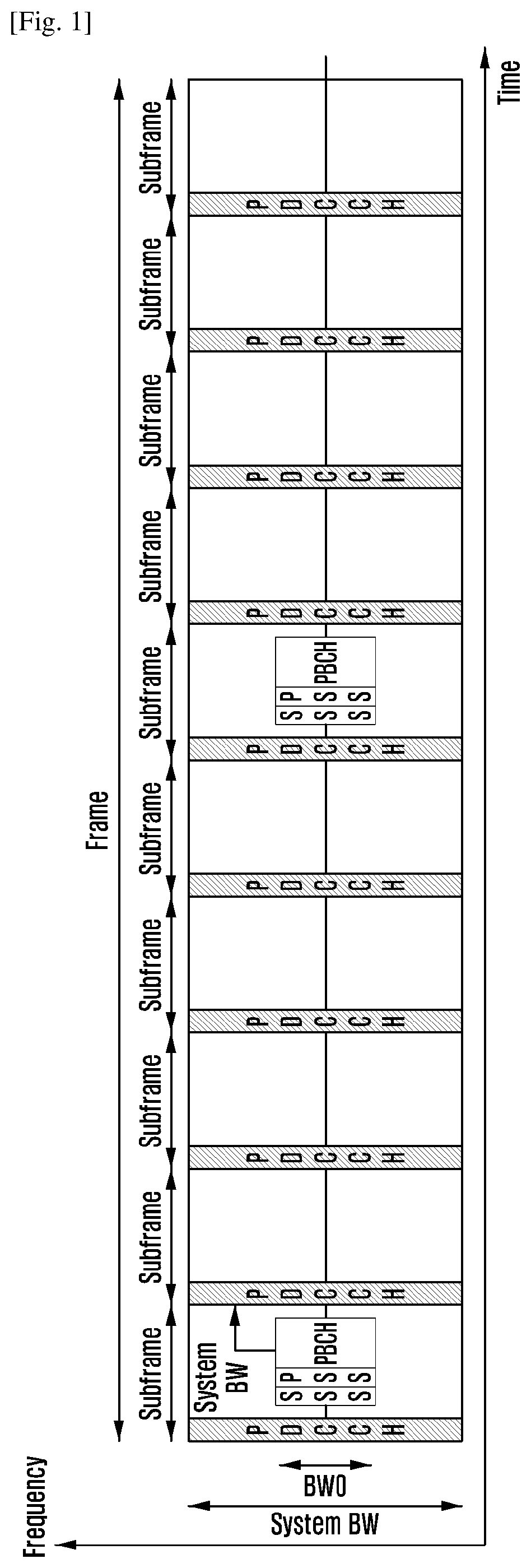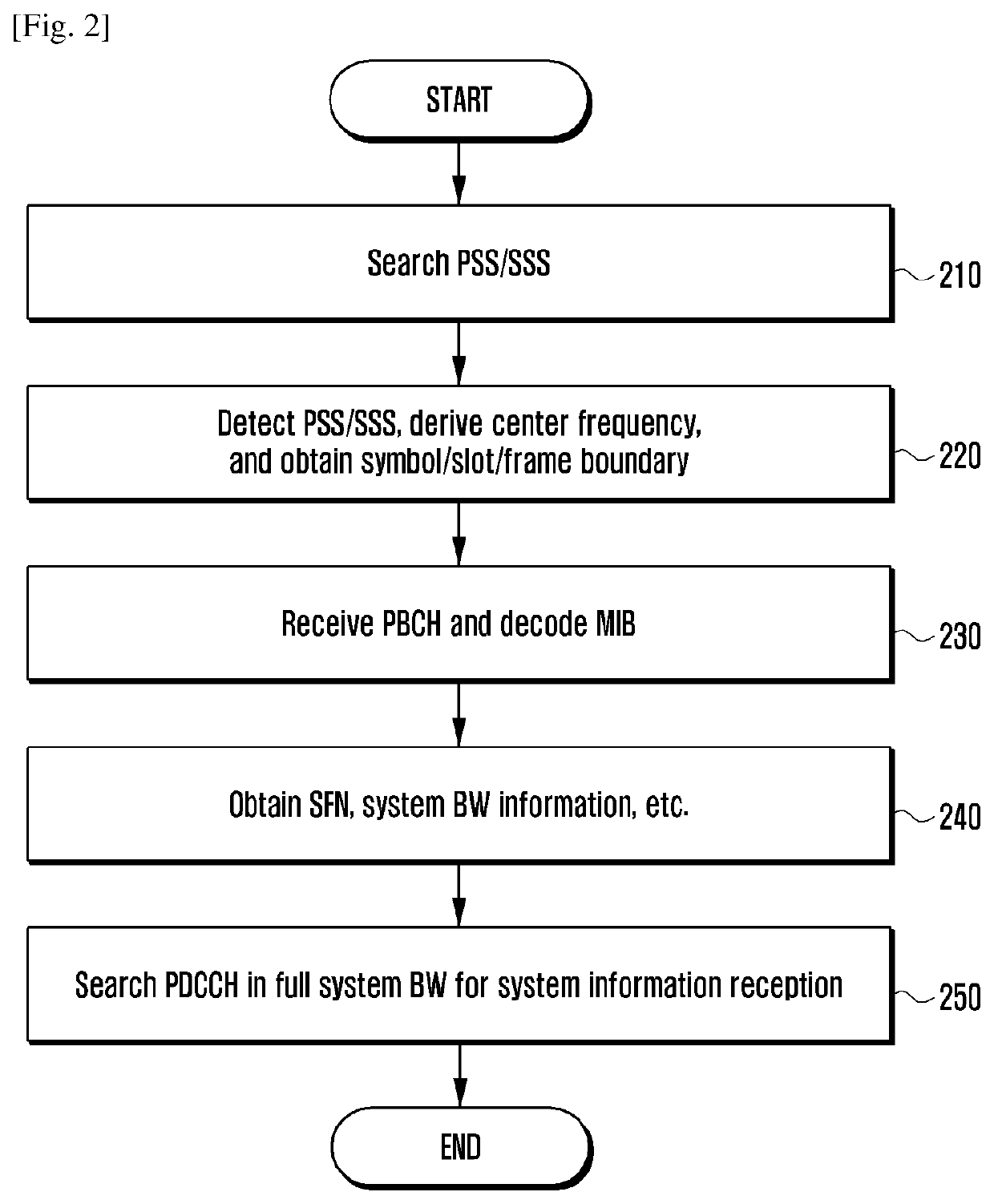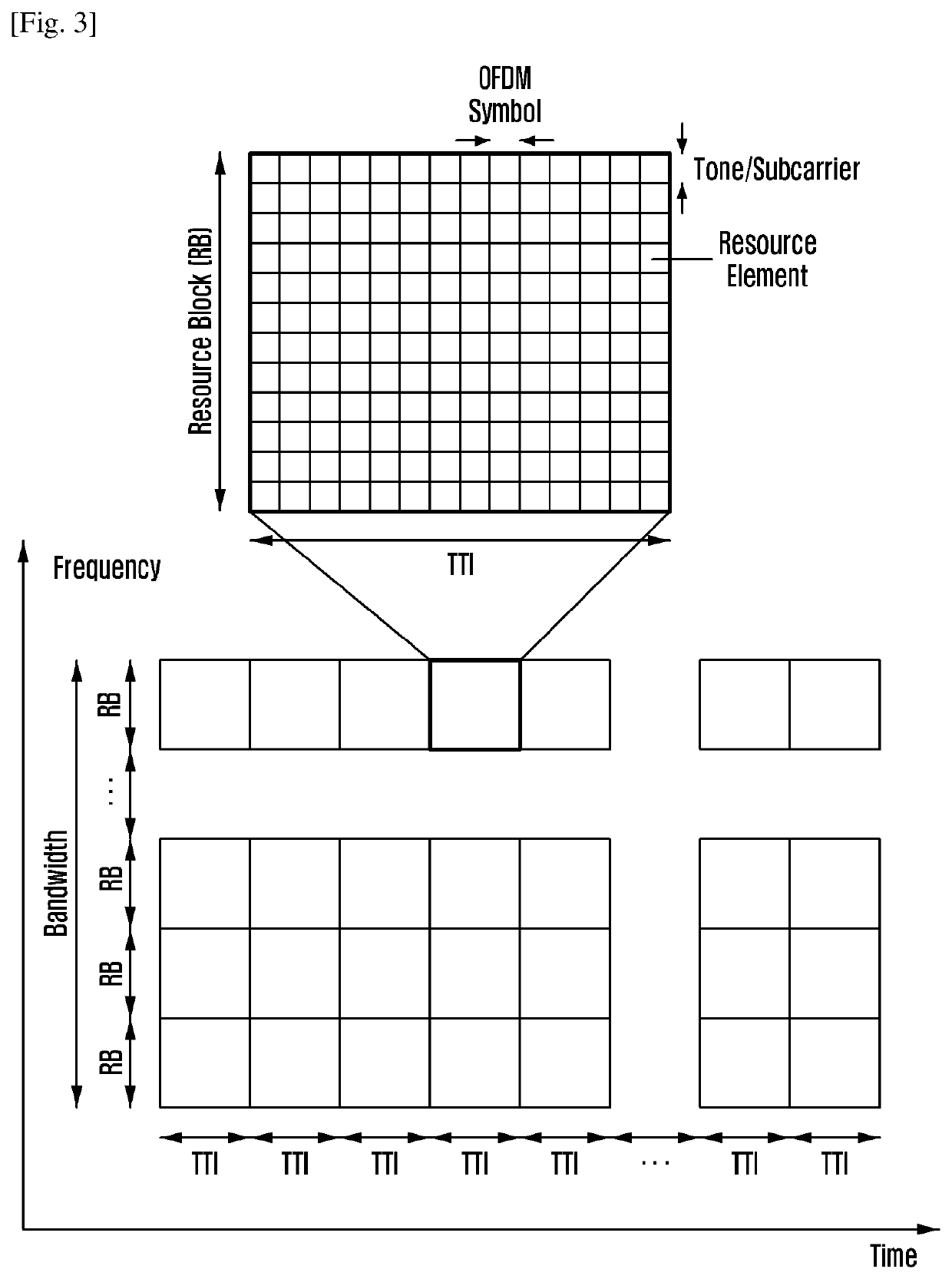Method and apparatus of initial access in next generation cellular networks
- Summary
- Abstract
- Description
- Claims
- Application Information
AI Technical Summary
Benefits of technology
Problems solved by technology
Method used
Image
Examples
embodiment 1
[0097] One restriction of the valid SS block center frequency candidates can be that at least the SS block transmission is not out of the carrier BW, which can be expressed by
fn-fm≤BWcarrier-BWSS2,
where BWcarrier is the carrier BW, or can be considered the actual transmission BW considering any possible guard band in the edge sides of the carrier, BWSS is the BW of the SS block. fn is the carrier center frequency determined by the gNB, and fm is the valid candidate for SS block center frequency.
[0098]FIG. 8 shows an example of valid candidate for SS block center frequency.
[0099]In the example of FIG. 8, the several candidates for the SS block center frequency around the carrier center frequency are valid, but the several candidates for the SS block center frequency in both edge sides of the carrier are not valid.
embodiment 2
[0100] Additional restriction of the valid SS block center frequency candidates can be the additional alignment in the frequency resource grid in the carrier. For example, the resource grid in the frequency domain can be determined based on the carrier center frequency, subcarrier spacing, and RB size, and so on. Given a carrier center frequency determined by gNB, the valid SS block center frequency candidates can be restricted to the ones aligned with a certain resource grid, e.g., aligned with the RB boundary or RB center in the carrier. When aligned with RB boundary, the condition can be expressed by mod(|fn−fm|,BWRB)=0 where BWRB is the RB size with the subcarrier spacing used in the SS block, fn is the carrier center frequency determined by the gNB, and fm is the valid candidate of SS block center frequency. This may make the resource mapping of synchronization signals easier, since the resource mapping is usually based on the unit of RBs.
[0101]FIG. 9 shows another example of v...
embodiment 3
[0103] One restriction of the valid SS block center frequency candidates can be that only a subset of SS block center frequency satisfying a pre-defined rule.
[0104]FIG. 10 shows an example of valid candidate for SS block center frequency.
[0105]Referring to FIG. 10, the subset can be compromised by the L valid SS block center frequency candidates, which are closest to the carrier center frequency.
[0106]FIG. 11 shows another example of subset of valid candidate center frequency for the SS block.
[0107]Alternatively, referring to FIG. 11, the subset can be compromised by the L valid candidate center frequency for the synchronization signals, where the two neighbor candidates has a pre-defined separation, e.g., a pre-defined integer times of channel raster size, or RB size, etc.
[0108]The size of L can be pre-defined, or depend on the system bandwidth.
[0109]Embodiment 4: The combination of the above conditions, e.g., in Embodiment 1 and 2 and other conditions and restrictions can also be ...
PUM
 Login to View More
Login to View More Abstract
Description
Claims
Application Information
 Login to View More
Login to View More - R&D
- Intellectual Property
- Life Sciences
- Materials
- Tech Scout
- Unparalleled Data Quality
- Higher Quality Content
- 60% Fewer Hallucinations
Browse by: Latest US Patents, China's latest patents, Technical Efficacy Thesaurus, Application Domain, Technology Topic, Popular Technical Reports.
© 2025 PatSnap. All rights reserved.Legal|Privacy policy|Modern Slavery Act Transparency Statement|Sitemap|About US| Contact US: help@patsnap.com



